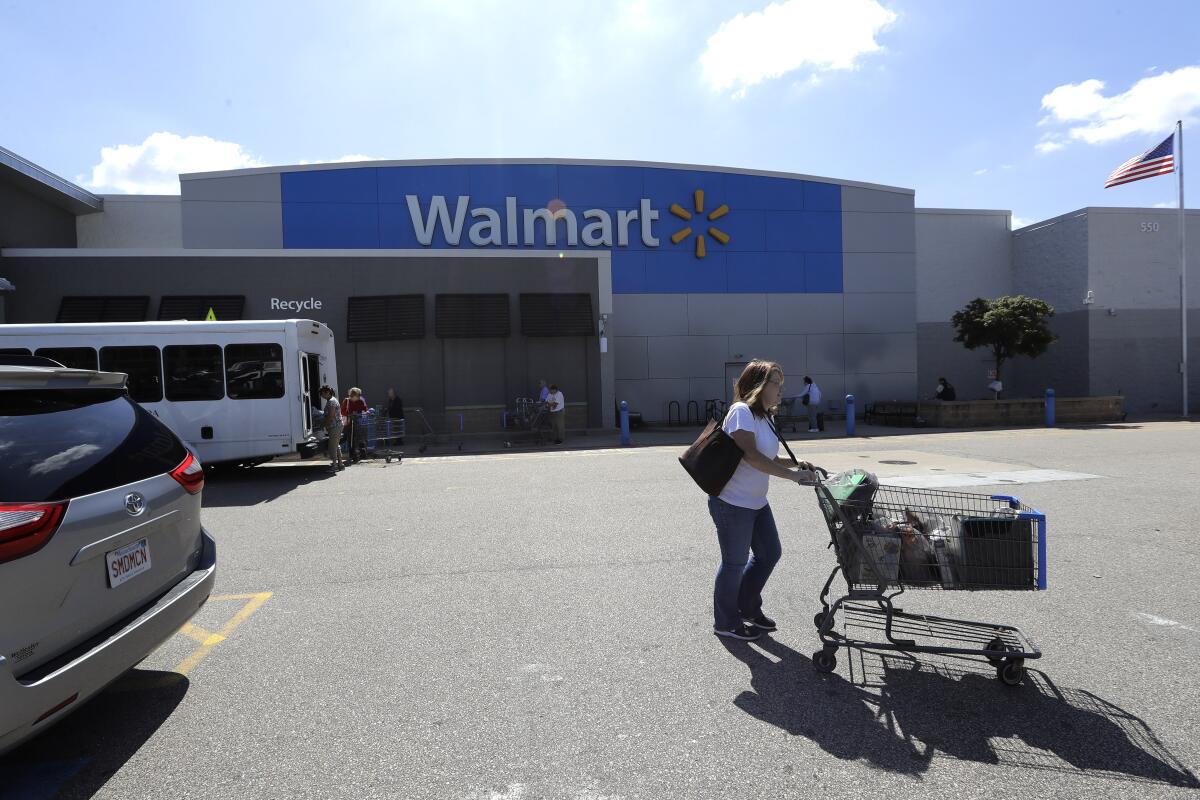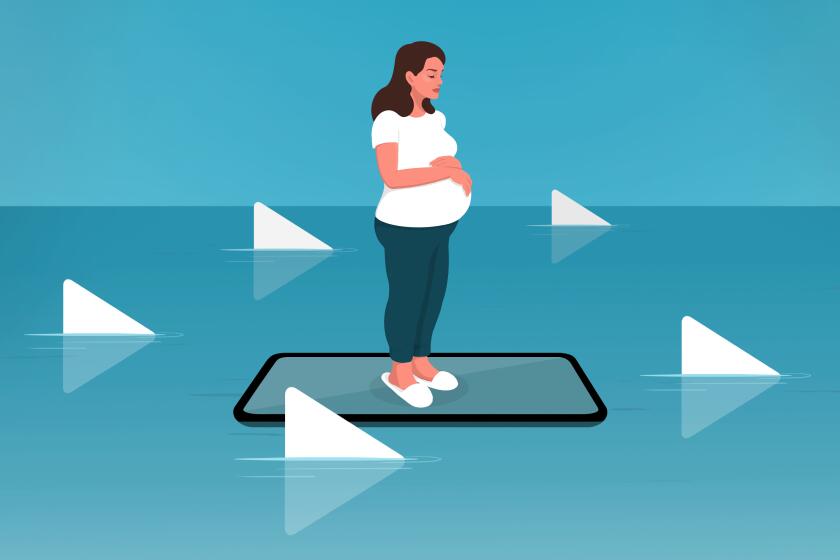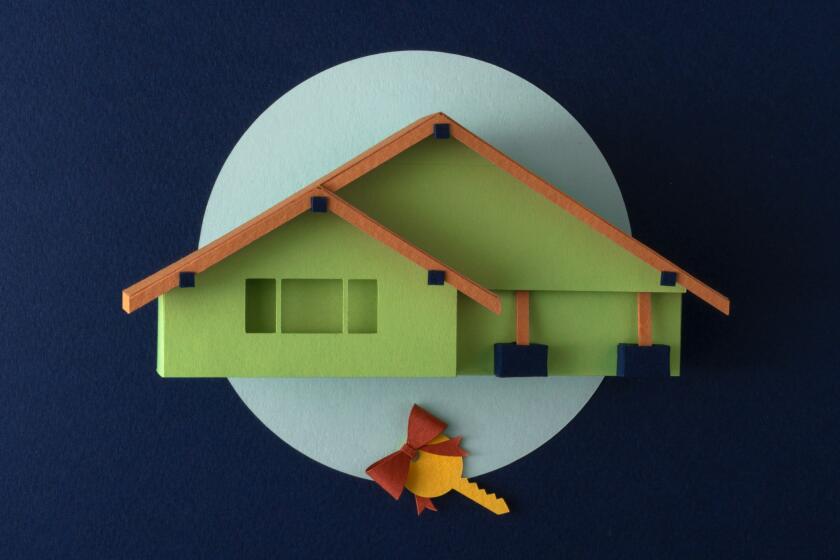Inflation divide: The wealthy splurge, the poorest pull back

- Share via
Americans at the low end of the income spectrum are once again struggling to make ends meet.
A confluence of factors — the expiration of federal stimulus checks and surging inflation on staples such as gas and food — is driving an even bigger wedge between the haves and have-nots.
Although wealthier shoppers continue to splurge, low-income shoppers have pulled back faster than expected in the last two months. They’re focusing on necessities while turning to cheaper items or less-expensive stores. And they’re buying only a little at a time.
It’s a reversal from a year or so ago when low-income shoppers, flush with money from the government and buoyed by wage increases, were able to spend more freely.
Kisha Galvan, 44, a mother of eight children ages 9 to 27, was able to stock up on groceries for the week and buy extras such as clothing and shoes for her children at Walmart last year.
But without the pandemic-related government support and inflation hovering at a near 40-year high, she is buying more canned food and depending on the local food pantry several times a week instead of once a week.
“I shop meal to meal,” said the Rockford, Ill., resident who has lived on disability for the last 15 years. “Before, we didn’t have to worry about what we were going to get. We just go get it.”
Rick Caruso has outspent his political rivals thanks to a fortune made developing high-end shopping malls and apartments. Here is how he accumulated that wealth.
The deep divide in spending was reflected in the latest round of quarterly earnings for retailers. At the high end of the spectrum, Nordstrom and Ralph Lauren reported stronger-than-expected sales as their well-heeled shoppers returned to pre-pandemic routines. Lululemon also reported strong quarterly sales of its pricey athletic wear.
But on the other end, Walmart’s customers are switching to cheaper lunch meats and half gallons of milk from full gallons. Kohl’s, a mid-priced department store, said its customers were spending less each visit. And Gap slashed its annual financial outlook, specifically citing the strain from inflation at its low-price Old Navy chain.
Both Dollar Tree and Dollar General, which historically benefit from shoppers trading down during difficult economic times, raised their sales outlooks last month. Meanwhile, discounter Big Lots suffered steep sales declines in the latest quarter, noting cutbacks in items including furniture.
“We are now in a new chapter where high inflation is greatly limiting the ability of consumers to make discretionary purchases, especially of high ticket items,” Big Lots Chief Executive Bruce K. Thorn told analysts late last month. “We know that many Americans now are once again living paycheck to paycheck.”
The pullback among low-income shoppers has not affected overall spending, which is still up. In April, the government said retail sales outpaced inflation for a fourth straight month, a reassuring sign that consumers — the primary drivers of the U.S. economy — are still providing vital support and helping ease concerns that a recession might be near.
But analysts believe even affluent shoppers could retrench if the stock market continues to weaken. Marshal Cohen, chief industry advisor at market research firm NPD Group Inc., said the stock market affects higher-income shoppers “psychologically” and more losses on paper could make them cut back.
The spending mood has shifted from October and November, when the Fed conducted a survey and found that almost 8 in 10 adults were either “doing OK or living comfortably” when it came to their finances in 2021, the highest proportion to say so since the survey began in 2013. For those earning less than $25,000, the proportion that said they were doing at least OK jumped to 53% from 40%.
But inflation has taken a bigger bite out of personal budgets and wiped out some of the wage gains, especially for those who earn less. The national average cost of a gallon of gas, for example, has jumped to $4.76 from $4.20 a month ago and a painful 56% from a year earlier, according to AAA.
At the Northern Illinois Food Bank, which feeds people in 13 counties, including Galvan and her family, the average monthly number of visits grew to more than 400,000 in the February-through-April period, from 311,000 in the July-through-September period, President Julie Yurko said.
On TikTok and Instagram, pregnant women find themselves targeted with videos that prey on their worst fears as expectant mothers, from birth defects to child loss. For some, quitting social media is the only solution.
Across the economy, median wages jumped 6% in April from a year earlier, according to the Federal Reserve Bank of Atlanta. But even though that was the largest increase since 1990, it was still below the inflation rate of 8.3%.
Meanwhile, the poorest one-fifth of Americans have exhausted the savings they’d built up during the pandemic in part through stimulus checks, child tax credit payments and higher wages, according to calculations by Jeffries, an investment bank. The other four-fifths of U.S. households are still sitting on a large stockpile of additional savings since the pandemic, with much of that held by the top fifth.
Inflation is playing out differently within businesses that cater to shoppers with varying income levels.
Michelle Gass, CEO of Kohl’s, said some shoppers are trading up to premium brands such as Tommy Hilfiger and Calvin Klein, while others are going to lower-price store labels. Macy’s boosted its annual outlook based on the spending habits of its wealthier shoppers, but its customers with median household incomes of $75,000 and below are switching more to its off-price brand.
The current environment is making it difficult for retailers to pass on higher costs. Macy’s, for instance, got pushback after raising prices on some casual clothing items and home accessories.
“We’re definitely seeing some balk at some of the prices,” Macy’s CEO Jeff Gennette told analysts on the company’s recent earnings call. “We’ve made adjustments there.”
For the Northern Illinois Food Bank — like many food banks — food costs are surging amid dwindling donations.
“Inflation and rising food costs mean the food bank has to make tough choices about our budget,” Yurko said. ”What foods can we provide consistently and what foods can we only provide if they are donated to us?”
A no-BS guide to buying your first home in Southern California.
More to Read
Inside the business of entertainment
The Wide Shot brings you news, analysis and insights on everything from streaming wars to production — and what it all means for the future.
You may occasionally receive promotional content from the Los Angeles Times.













